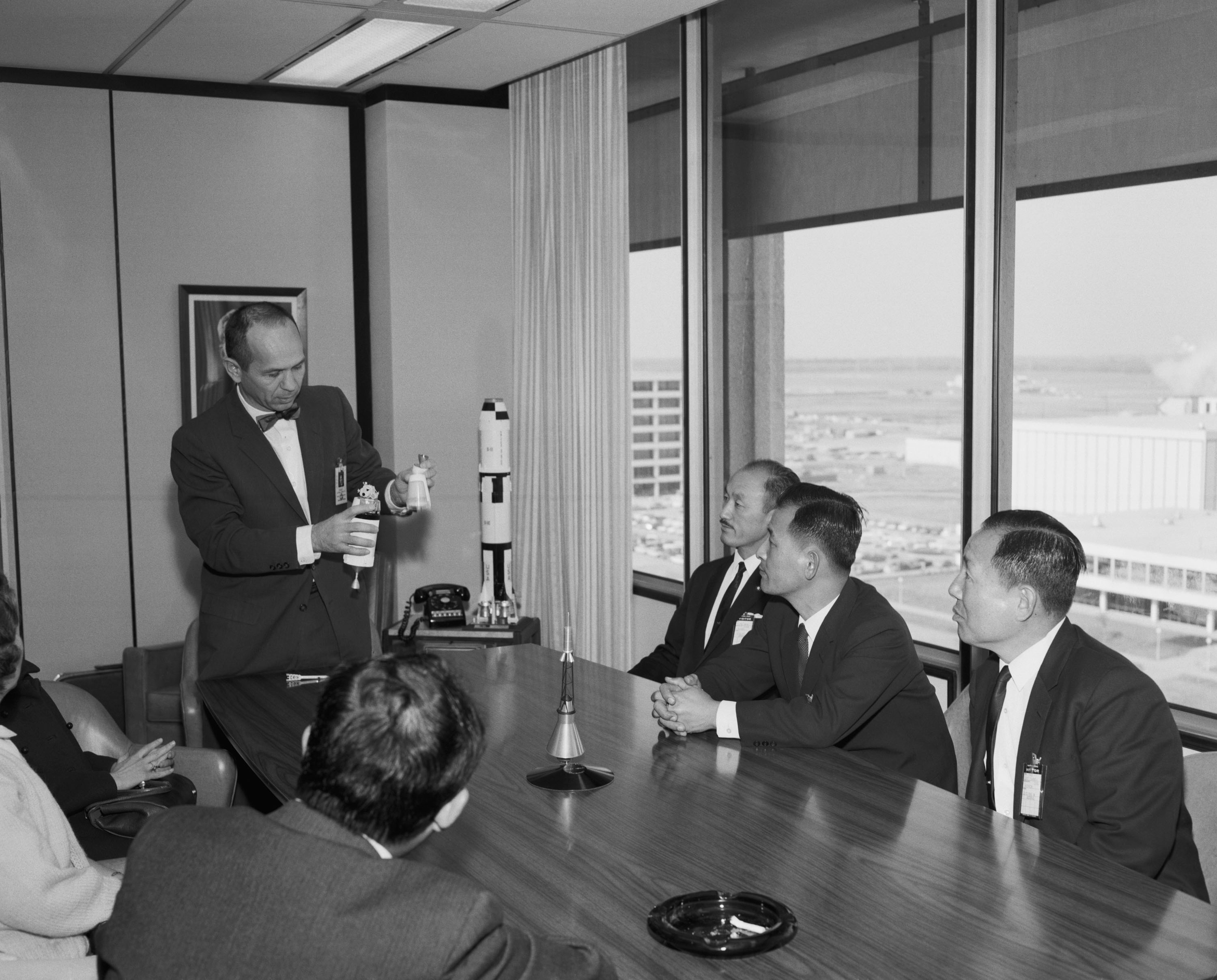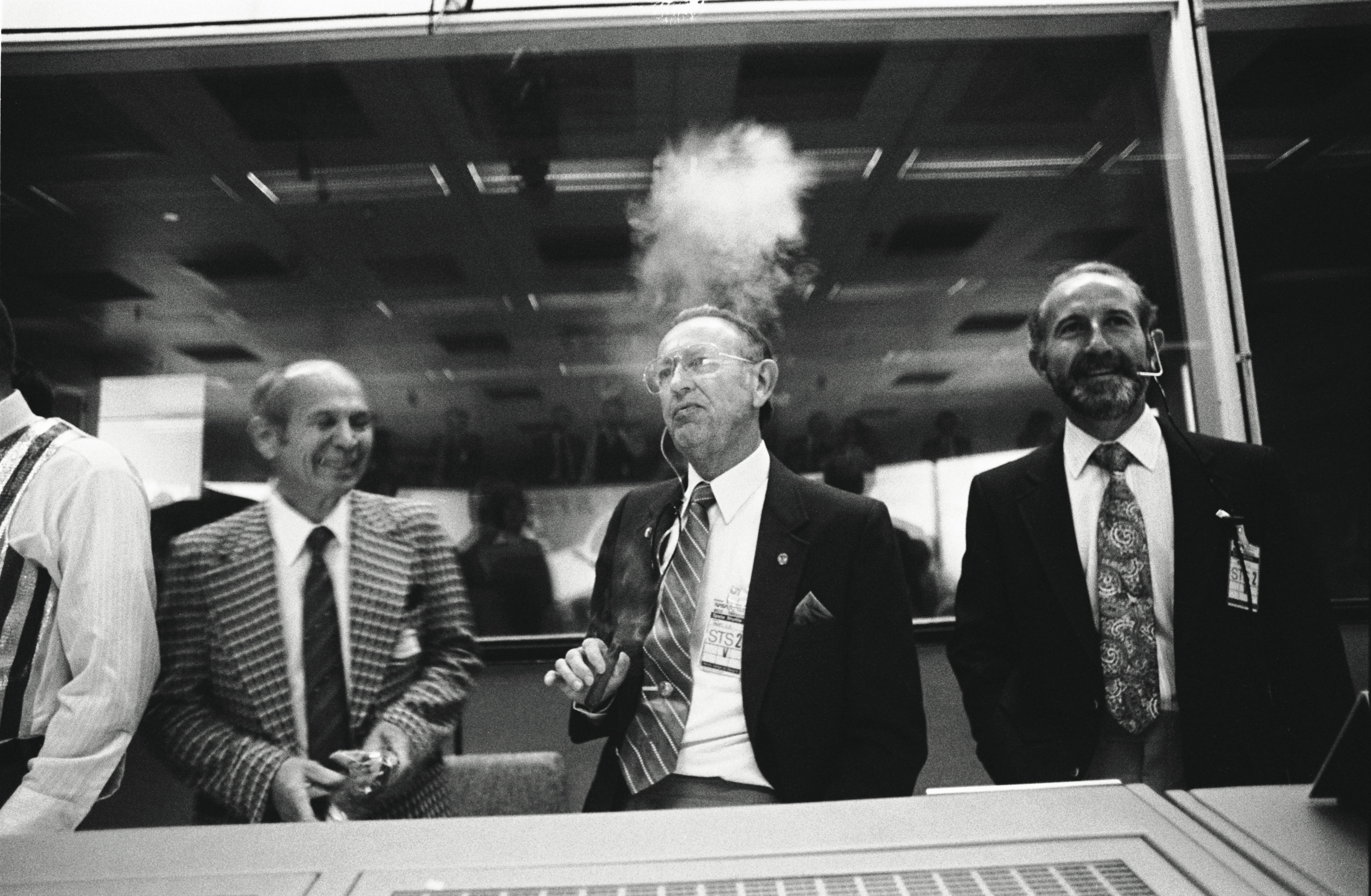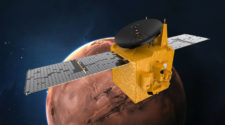
Apollo 11 Astronaut Neil Armstrong is rightfully remembered for taking mankind’s first steps on the Moon nearly 50 years ago on July 20, 1969. Less well known, perhaps, is LSU Mechanical Engineering alumnus Maxime “Max” Faget, who designed the spacecraft responsible for that “giant leap for mankind.”
Born in Stann Creek, British Honduras (now Belize) in 1921, Faget was the son of American doctor Guy Henry Faget and the great-grandson of New Orleans doctor Jean Charles Faget. Guy Henry was famous for discovering the first effective treatment for leprosy using promin and also served as director of the United States Marine Hospital in Carville, La. Jean Charles is renowned for discovering the unique symptom of yellow fever, known as the Faget sign, which allowed early detection and quarantine. Unlike the men before him, however, Max took a different path in life.
His quest for discovery began at a young age when he built model airplanes with his brother and read science fiction magazines. After graduating from high school in San Francisco, Faget enrolled in mechanical engineering at LSU, where he earned his bachelor’s degree in 1943. Rather than find a job in his field right away, he enlisted in the U.S. Navy and served as a submarine naval officer aboard the USS Guavina in the South Pacific during World War II.
“You had to volunteer to be on a submarine,” Faget’s only son, Guy, said. “They couldn’t just assign you to it. Dad chose a submarine because it behaves like a plane, except they’re in water. The dynamics are similar.”
Once the USS Guavina was decommissioned in 1946, Faget contacted a college friend who worked at the National Advisory Committee for Aeronautics (NACA) Langley Memorial Aeronautical Laboratory in Langley, Va. It was here that he became a research scientist first assigned to Langley’s Applied Materials and Physics Division working on rocket propulsion. He then transferred to the Pilotless Aircraft Research Division, where he helped create the North American X-15, a hypersonic spacecraft designed to reach the edge of outer space and return with valuable information that could be used to design aircraft and spacecraft.

From Mercury to Apollo
In 1958, NACA became NASA, and the Space Task Group was created. Faget was part of this team of 35 engineers who were responsible for NASA’s manned spaceflight programs, including Project Mercury, the first U.S. human spaceflight program that ran from 1958 to 1963. The goal of this project was to put a man into Earth’s orbit and return him safely, ideally beating the Soviet Union in the process.
Faget served as the principal designer of the Mercury spacecraft, which included a launch escape system (called a “chicken switch” by Faget) and small retrorockets to bring the spacecraft out of its orbit. The capsule and astronaut would then return to Earth by way of a parachute water landing. Ironically, the launch escape system Faget designed was never needed by the U.S.—a good thing—but the idea was stolen by the Soviets and saved two of their cosmonauts.
The Mercury program’s success led to Project Gemini, in which Faget designed a two-person capsule and perfected space-docking maneuvers that would help with the subsequent Apollo program announced a few weeks after the first manned-Mercury flight. Altogether, there were 20 unmanned-Mercury flights and six successfully manned.

Though the Apollo program was conceived during the Eisenhower administration in 1960, President John F. Kennedy announced in 1961 that the U.S. would send astronauts to the Moon and bring them safely back to Earth. In order to reach this goal, NASA found it necessary to build a larger new facility in Houston called the Manned Spacecraft Center (later named the Lyndon B. Johnson Space Center), where Faget would serve as director of engineering and development until his retirement.
After years of perfecting the Apollo mission, NASA was ready to send three astronauts to the Moon in the Saturn V rocket. It would take the crew 76 hours to travel 240,000 miles to their destination.
“I remember we were at home and dad was at the office, in case they needed any consultation, since they didn’t have pagers in those days,” Guy said. “We were pretty flabbergasted watching the landing on TV. When you walked outside that day, you could see the Moon, and I thought, ‘Wow. There are people up there.’”
“I was at summer school at LSU at the time, but I remember going outside and looking up at the Moon, trying to imagine that there were actually men up there,” said Ann Faget, the oldest of Faget’s children.
“We all watched it together, and it was so exciting,” Faget’s second oldest daughter, Carol, said. “The tension, though; I was so afraid something was going to go wrong.”
Faget’s children weren’t the only people amazed by his work. It’s estimated that 600 million people across the world watched the first U.S. Moon landing on TV.
Over the course of 11 years, the Apollo program saw six missions land on the Moon, with 12 astronauts walking on the lunar surface.

The Space Shuttle
Before the Apollo program ended in 1972, Faget had begun designing the first Space Shuttle that could carry up to eight astronauts and serve as an airplane gliding them back to Earth. The Space Shuttle program, officially known as the Space Transportation System, would become the only winged, reusable, manned spacecraft in the world. It was 17 times bigger than the Apollo capsule.
Guy remembers hearing his dad talk about the new invention he was working on.
“When I was 15 in the spring of 1969, my dad took his friend Dr. Dan Daniel [LSU professor emeritus of mechanical engineering and former chairperson of the LSU Department of Mechanical Engineering], his son, and myself on a two-hour drive to go fishing,” Guy said. “Dad was telling Dr. Daniel about his new invention, the concept of a reusable rocket that would go into space and return safely to earth as a glider.
“Not long after that, dad made his balsa wood models that he would glide in the back yard. I was out there with him and would watch him throw these like a paper airplane. Then I would pick them up and glide them back to him. What I remember is each time he would pick one up, he would look at it and examine it with his aerodynamic eye, trying to figure out a way to make it perform better. I distinctly remember that.”
It would be nine years after the Apollo program ended before the Space Shuttle first launched on April 12, 1981. Astronauts John Young and Robert Crippen were aboard the Space Shuttle Columbia, which lifted off from the Kennedy Space Center in Florida. The flight was a success, to which Faget said, “thank God.”
“My mother and I were present in the Mission Control viewing room for the first shuttle landing,” Ann said. “The biggest cheer came when they broke radio silence, indicating they had safely re-entered Earth’s atmosphere. It was a very proud moment for my dad and the rest of the team.”
Faget retired soon after the first shuttle flight, but not without leaving his mark on American history. From 1981 to 2011, the STS would see 133 successful flights, none of which would have been possible without Faget’s design expertise.
“Dr. Faget was known to be an outstanding engineer and had great concepts,” said former NASA Chief Engineer for the International Space Station Chester Vaughan, who worked under Faget at NACA and the Johnson Space Center. “We considered him the father of our organization. He always had new ideas, which is why he had such a great career.”

Retirement From NASA and a Love For LSU
Leaving NASA, however, didn’t mean Faget was done with space exploration. He joined consulting firm Eagle Engineering, then went on to found Space Industries Inc., with hopes to build a privately owned space station called the Industrial Space Facility. Though the ISF did not come to fruition, Space Industries Inc. created the Wake Shield Facility, an experimental science platform that flew twice aboard the Space Shuttle to demonstrate a technique for processing material in a near-perfect vacuum.
“After Space Industries, my dad still liked to build things at home, read, watch sports, play pool and cards, travel, socialize with friends, and dote on his dog, Cleo,” Nanette said.
Faget didn’t watch just any sports, however. He loved LSU sports.
“He loved everything about LSU,” Guy said. “One thing he wasn’t shy about was bragging about LSU sports.”
“I remember listening to LSU football games on the radio on Saturdays and then watching them on TV when we had access to a station,” Nanette recalled.
His children remember that in June 2000, their dad suffered a heart attack while watching LSU play in the College World Series Championship game. After arriving to the hospital, the first thing Faget asked Ann was, “What’s the score?”
“He didn’t want me to stay in the room with him,” Ann said. “I had to go out to the waiting room where the game was on and report back to him at the top and bottom of every inning. Who knows if the stress of watching the game brought on his attack, but the news that LSU had won its fifth CWS title certainly put him in a good mood!”
An even bigger testament to Faget’s love for LSU is that two of his children attended the university.
“You could definitely say dad had a lot to do with my coming to LSU,” said Ann, who earned an English degree from LSU and worked for a NASA contractor. “He was a real LSU fan.”
Guy, who graduated from LSU with an entomology degree and is a commercial pilot, said that it felt natural to attend his dad’s alma mater.
“Ann had already gone, so I thought it was a cool idea, and Dr. Daniels was still there,” Guy said. “In my case, I finished school [at LSU] and never moved back to Texas.”
Though Carol and Nanette didn’t attend LSU, they still followed in the Faget family’s footsteps. Carol, like her grandfather, became a doctor—one of only three female pediatricians in Austin at the time. Nanette not only went into aerospace and worked for NASA for 36 years as an engineering manager, but she also married an astronaut who was on the STS-125 mission to repair the Hubble Space Telescope in 2009.
“When we were looking at colleges, dad gave me some advice,” Nanette said. “He said, if you just major in aerospace, you’ll be limited, but if you become a mechanical engineer, you’ll be able to do anything an aerospace engineer can do, and you’ll have a lot more opportunities. So, that’s what I did. I was always good in math and science, so it was a natural inclination to become an engineer.”

Family Life
Though renowned for his extensive work with NASA, Faget’s engineering skills paled in comparison to his role as a husband and father. According to Faget’s four children, their fondest memories of their dad are stolen moments spent at the beach or the dinner table after a long day.
“He was always home for dinner, and we got to hear about his work—other leaders at NASA and the technical, strategic, and operational decisions they struggled with,” Nanette said. “It was always interesting. I had a sense that he was very influential, and I was very proud of that.”
“Dad would always find time to take us on vacation in the summer, which we have tried to pass on to our kids,” Guy said.
Carol fondly remembers being on her dad’s shoulders while wading in the Atlantic Ocean on their beach trips to North Carolina. Faget also loved sailing and would take all four kids out on the boat to crew for him. He also knew his way around the kitchen. Nanette recalls her dad making crepes with bacon, powdered sugar, and syrup every New Year’s Day, and Ann looked forward to his Bananas Foster.
“He had a special recipe,” Nanette said. “It was quite the production.”
“For us, he was just our dad,” Ann said.
“He wasn’t just a great father, he was a great husband,” Guy said. “Mom was his anchor.”
Faget met his wife Nancy while training in Philadelphia to become a submariner, and the two were married for 47 years before Nancy passed away in 1994.
“When she passed away, he told us several times how much he missed her,” Guy said. “Those 10 years without her were very tough for him.”
“Mom was proud and a big supporter,” Nanette said. “She kept everything going smoothly for him at home so he could focus on work.”
Faget’s family and NASA weren’t the only ones to recognize his talent. In October 1969, Faget was inducted into the International Space Hall of Fame in New Mexico. In 2003, just a year before his death, Faget was inducted into the National Inventors Hall of Fame in Akron, Ohio.
“He was very excited about that,” said Guy, who alongside his sister Ann, accompanied their father to Akron.
Faget received the NASA Outstanding Leadership Medal, the Arthur S. Flemming Award, and the John J. Montgomery Award, which was created by the National Society of Aerospace Professionals and the San Diego Aerospace Museum for aerospace achievement. He was also the first recipient of the Rotary National Award for Space Achievement and one of the first inductees to the LSU College of Engineering Hall of Distinction in 1971.
Faget has 12 patents to his name, including the Aerial Capsule Emergency Separation Device, the Survival Couch, the Mercury Capsule, and a Mach Number Indicator.
If he were here today, his children said their father would be excited to see the senior design projects that LSU Engineering students are working on. Carol also thinks he would have a bit of advice to offer students.
“He has told students at lectures that besides being a good engineer, you need to know how to write,” she said. “You must be able to convey your ideas. I think he would also say do what you love. Don’t sell yourself short. We’re designed to be curious, and there’s such satisfaction in discovery.”



